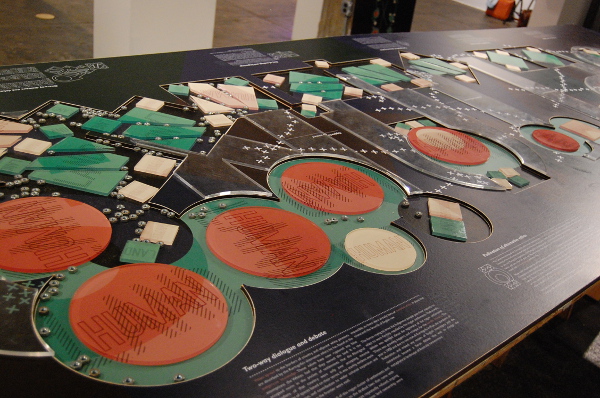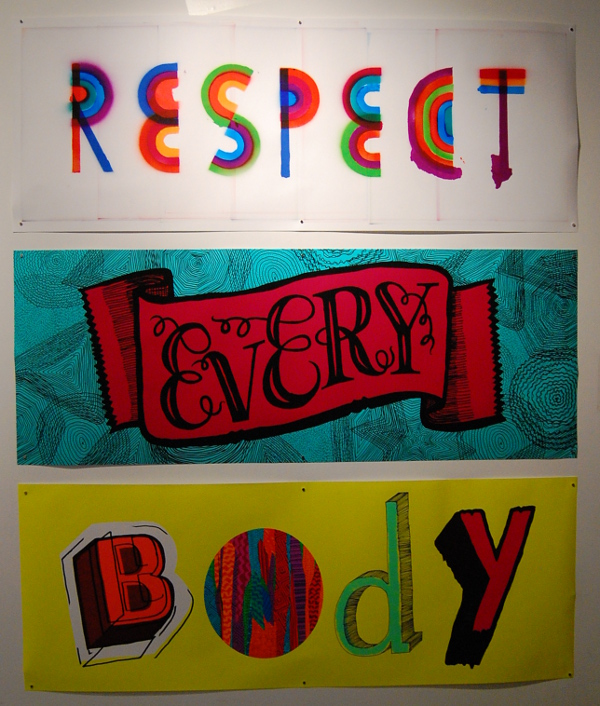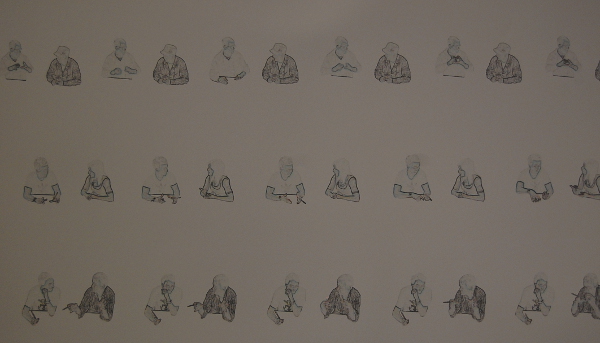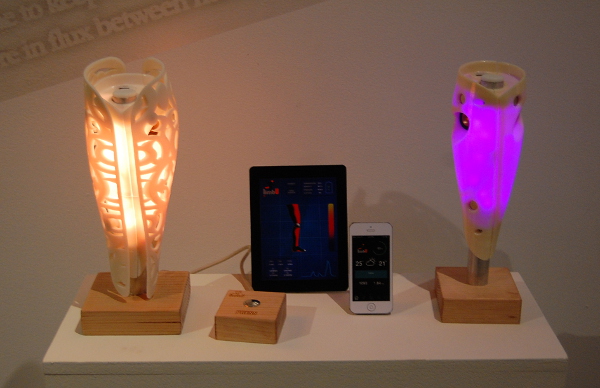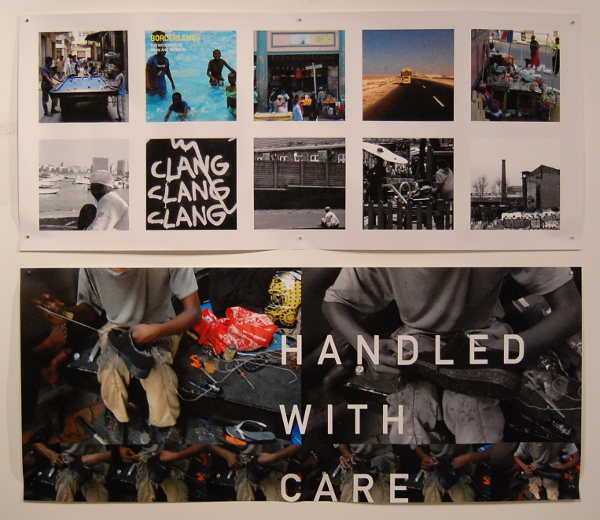
Concepts of design present and future from Queensland to Philadelphia
Presenting the ongoing research from Queensland College of Art in Australia, the “Design in Flux” exhibition at Crane Arts staged by DesignPhiladelphia is a spectacular investigation into where design is now and where it’s headed. By addressing design as an ongoing process as opposed to a finite end, the many contributors utilize their expertise in interior design, graphic design, the humanities, 3D printing or technology to provide a multifaceted view of the values and means by which design shapes our world, and perhaps how we can necessitate change going forward.
Narratives are a common tool in all manner of human discourse. Many of the visions of the future have depicted utopian communities living in harmony amidst technological wonders, or tyrannical dystopian surveillance states. While both are certainly helpful for examining possible scenarios, the facts of climate change, economic disparity, population growth, and resource depletion are very real and encroaching factors that will serve to shape the future.
In Dr. Eleni Kalantidou’s “Lécher la vitrine (licking at the shop window),” we find images from around the world that illustrate that, in many ways, design is a socio-political issue. Design’s role as an aesthetic movement is obvious, but what other effects lie below the surface appearance? Kalantidou espouses that through image-making, marketing and homogenization of cultures, design is a driving force among developed economies, and that it is rarely recognized for its function as an exercise of power. Whether we take a look at the means of production or its transformative sway over localities and mindsets, it becomes clear that the concept of design is not always just a pretty picture. In her call to alter our focus from materialism to human capital, we find scenes of developing countries, and an anonymous young boy assembling a shoe. The text reads “Handled With Care,” reminding us that, despite our desire for new and interesting things, we must keep in mind how they come to be.
Tristan Schultz, “Kartogrifa In-Flux.”
Tristan Schultz also explores themes of Eurocentricity and separation from the land in the interactive event “Kartogrifa In-Flux,” complete with a moveable graphic layout. Following the story of a fictional expedition from England to pre-colonial Australia, we see how the branches can take us to a mutual understanding and respect for indigenous knowledge, or the eventual destruction and division of natural habitats and native cultures. The tabletop tale reads much like a board game with shapes and colors representative of land, humans and the interactions that occur between the different elements. These tools help us to envision culturally constructive narratives and alternative histories in the face of an oppressive past.
David Sargent, “Respect Every Body.”
Less political and more humanist, we find works like David Sargent’s “Respect Every Body,” whose bold colors and imperfect, hand-drawn textual elements seek to reimagine and undermine the ways negative body image affects individuals throughout the world by providing a diverse range of possibilities and slogan.
Beck Davis, “Proximity.”
Beck Davis is interested in the gestures we use while we communicate – specifically those between designers themselves. By capturing design teams as they communicate, her project “Proximity” reduces the images to the individuals after removing their backgrounds or environments. Here we are able to view stills of the often unconscious nonverbal cues we send to others, in this case while actively working on visual design. In this way, we are able to see how critical, if sometimes near invisible, gesture is to the collaborative process.
Peter Hall and Steve Bowden, from “Tangible Tweets.”
Twitter’s power as a social tool and way to disseminate information or view the world is practically undeniable. It helps quickly spread news, shape social relations and even preserve memories. Peter Hall and Steve Bowden’s “Tangible Tweets” looks at this platform through a number of ways that allow us to better approach the disorientation that so often goes along with our contemporary digital lives. After requesting that visitors to a DesignInquiry event in Maine use their sporadic cell reception to tweet images of their surroundings instead of merely jargon-filled chatter, the pair aimed to connect people to what was around them as opposed to being drawn away from their surroundings via technology. Afterward, Bowden began printing these and other Twitter messages utilizing mixed and misused printing techniques. These experiments become explorations of authenticity and legibility that emerge from a medium that is momentary into a realm of permanence through prints, and even the very cast metal letterpress fixtures that produce text. An enormous wooden hashtag and its accompanying print humorously punctuate the project with the symbol and its unwieldy means for reproduction.
Troy Baverstock, “limbU.”
Most functional and futuristic is “limbU” by Troy Baverstock. Prosthetic appendages are often only pragmatic, and as a result, somewhat visually unappealing. Baverstock takes prostheses to the next level with a 3D printed device that, although a fully functioning limb, also plays music, serves as a phone charger, medical diagnostic tool and activity tracker… and it glows, too. The illuminated colors and sleek shape of the artificial leg are impressive, but it also provides information about speed, intensity and number of steps in a day, as well as altitude, direction, GPS coordinates, temperature and humidity readings. Instead of merely relying on a prosthetic as leg to stand on, Baverstock expands the abilities into the realm of Bluetooth and navigation, turning a leg into a useful device beyond its obvious use.
These and many more pieces shed light on the current trends in design as well as its steady climb to new heights in the near future. Be sure to visit Crane Arts to check out “Design in Flux” before it closes on October 30.
Crane Arts is located at 1400 North American St., Philadelphia; [email protected]; cranearts.com.
Recent Content
-
Artsarticle ·
-
Artsarticle ·
-
Artsarticle ·
